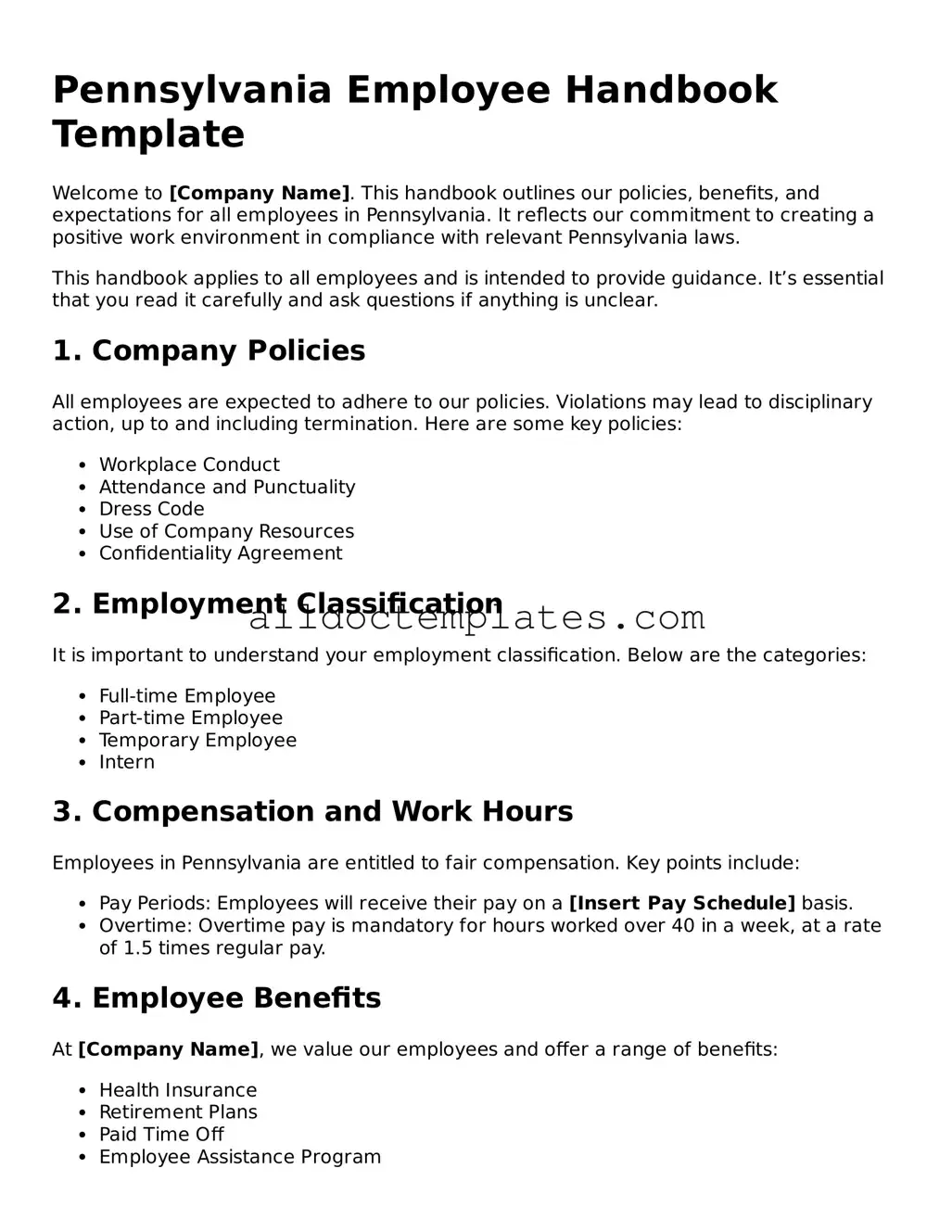Pennsylvania Employee Handbook Template
Welcome to [Company Name]. This handbook outlines our policies, benefits, and expectations for all employees in Pennsylvania. It reflects our commitment to creating a positive work environment in compliance with relevant Pennsylvania laws.
This handbook applies to all employees and is intended to provide guidance. It’s essential that you read it carefully and ask questions if anything is unclear.
1. Company Policies
All employees are expected to adhere to our policies. Violations may lead to disciplinary action, up to and including termination. Here are some key policies:
- Workplace Conduct
- Attendance and Punctuality
- Dress Code
- Use of Company Resources
- Confidentiality Agreement
2. Employment Classification
It is important to understand your employment classification. Below are the categories:
- Full-time Employee
- Part-time Employee
- Temporary Employee
- Intern
3. Compensation and Work Hours
Employees in Pennsylvania are entitled to fair compensation. Key points include:
- Pay Periods: Employees will receive their pay on a [Insert Pay Schedule] basis.
- Overtime: Overtime pay is mandatory for hours worked over 40 in a week, at a rate of 1.5 times regular pay.
4. Employee Benefits
At [Company Name], we value our employees and offer a range of benefits:
- Health Insurance
- Retirement Plans
- Paid Time Off
- Employee Assistance Program
5. Leave Policies
Employees are entitled to various types of leave. The options include:
- Sick Leave
- Vacation Leave
- Family and Medical Leave Act (FMLA) Leave
6. Employee Rights
Pennsylvania law protects your rights as an employee. You are entitled to:
- Safe working conditions
- Freedom from discrimination
- Privacy in work-related matters
7. Reporting Issues
If you encounter workplace problems, please report them to your supervisor or HR. We take all concerns seriously.
8. Acknowledgment of Receipt
I, [Employee Name], acknowledge that I have received and read the [Company Name] Employee Handbook. I understand the policies and agree to comply.
Signature: ___________________ Date: ________________
